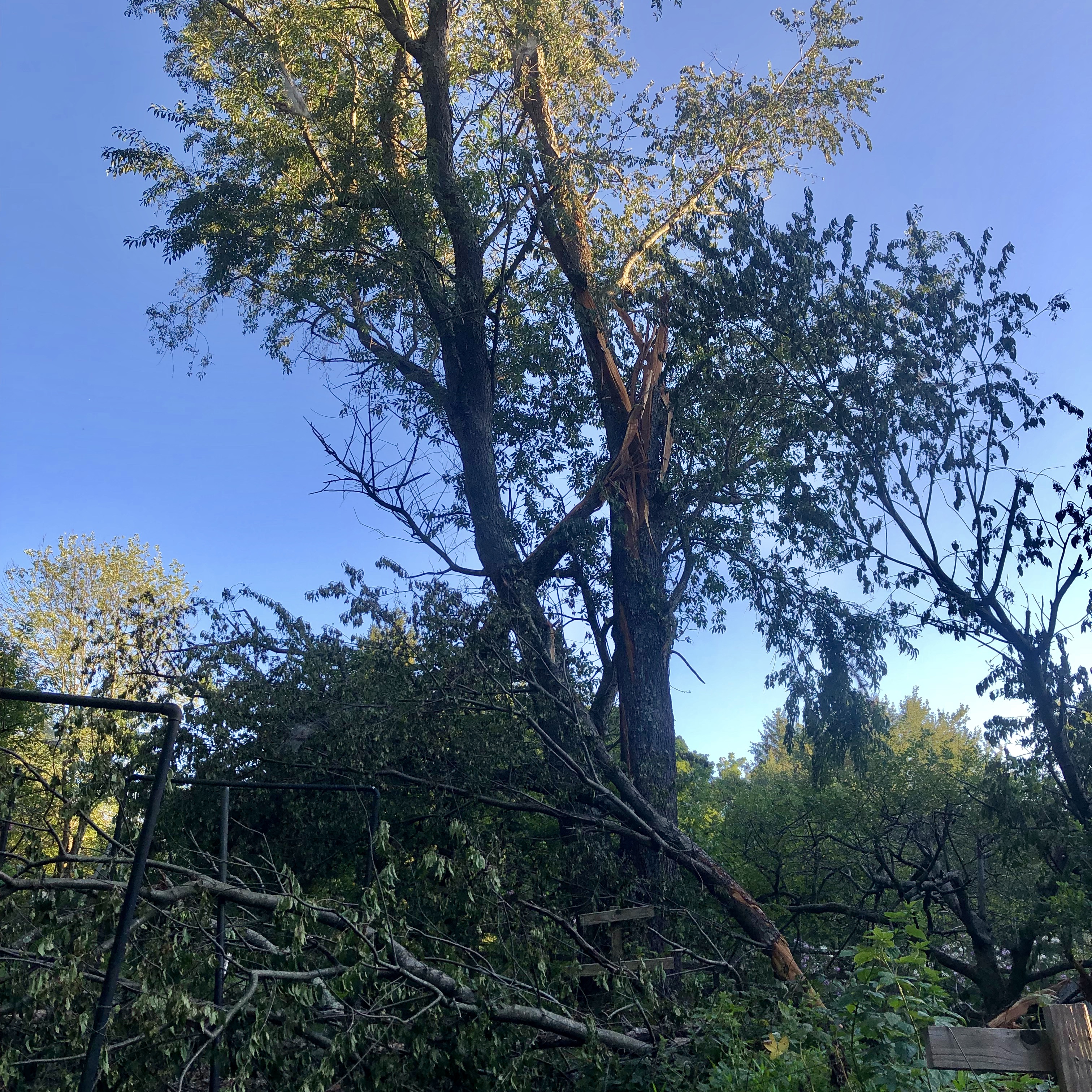Lightening Strikes
Lightning is one of the most spectacular and dangerous forces in nature. It kills more people than tornadoes and hurricanes. Depending on the source, about 2000 people are killed worldwide each year by lightning. This tragedy just happened in Poland. Lightening strikes killed several people at a popular hiking destination. Ninety percent of people struck survive however they may sustain life altering injuries. The tree in the photos was recently struck by lightning. This post is to remind you why not to stand under a tree during a storm.
Cloud to Ground Lightning Strikes
Highly simplified, lightning is an electrical discharge caused by a difference in charged particles in the clouds and on the ground. The lower parts of clouds develop a negative charge. Objects on the ground have a positive charge. Nature wants to create a balance, so it passes a current, the lightning bolt to connect the two and balance things out. The negative charge from the cloud flows towards the ground. When it gets within 150ft of a something positively charged on the ground, that object, a person, tree, or building, sends up a positive charge. The characteristic flash of lightning occurs when the two collide.
What happens when lightning strikes a tree?
Wood is not a good conductor of electricity. That makes perfect sense too! We never use wood as a conductor to set up an electrical circuit. Water and sap are better conductors than wood. When lightning strikes and uses them as a conductor, they heat to extreme temperatures and boil or vaporize.
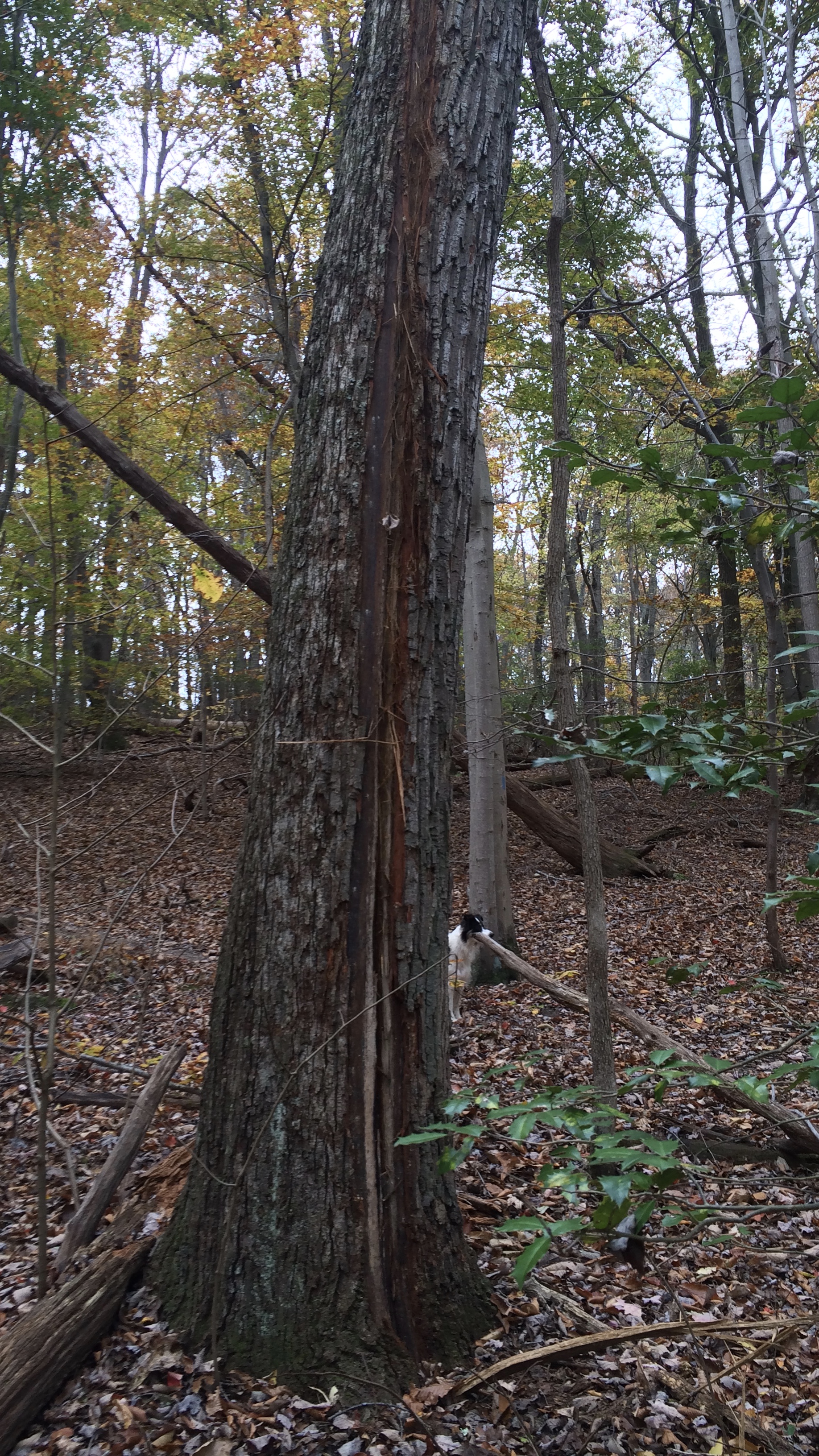
Characteristic Strike & Peeled Bark
When a tree is struck by lightning, the lightning usually follows the concentration of water in the tree. If the water is mostly in the outer layers of the tree, then the lightning will follow this path. This usually creates the characteristic strike running from top to bottom that peels away strips of the outer bark.
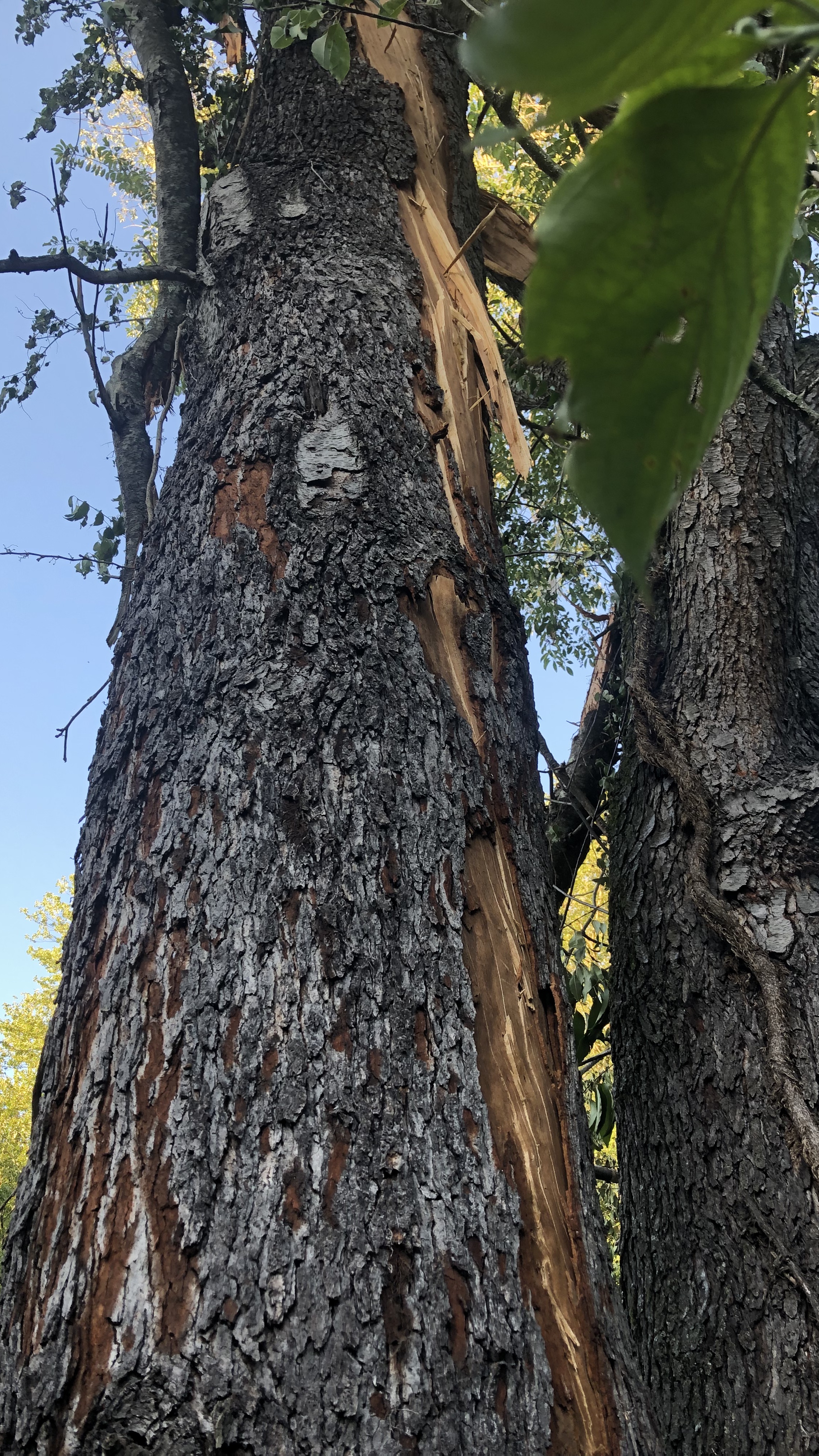
Extensive Lightning Damage
The photos below are examples of when moisture is concentrated in the center parts of the tree. The lightning gravitated towards the innermost moisture. The lightening strike literally blew the tree apart. Large chunks of the tree were sent hurling into the ground and around the surrounding area. The photos do not accurately describe the strength of the force. It is very difficult to get 12" diameter limbs jammed into the ground.
Lightning Damage
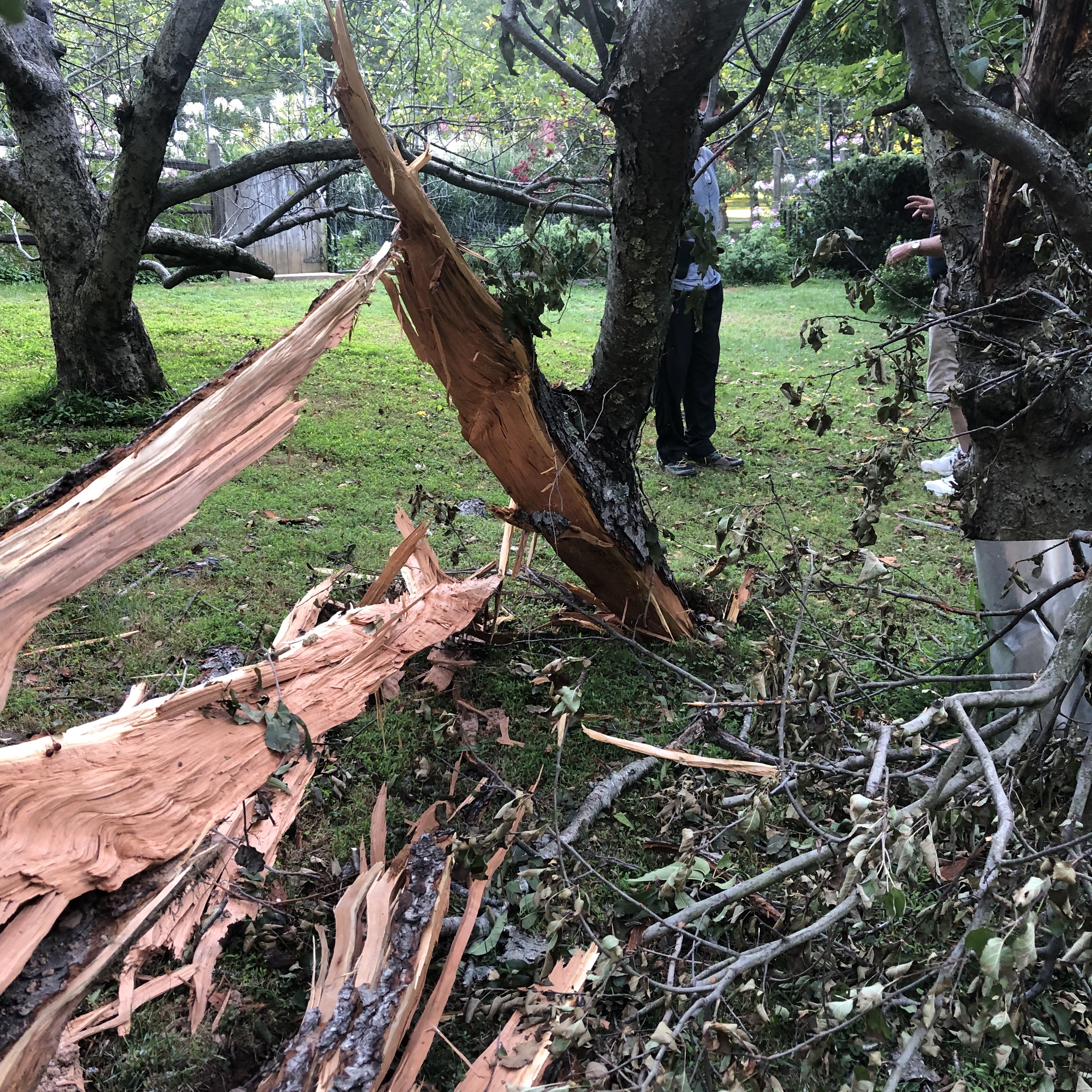
Significant Force
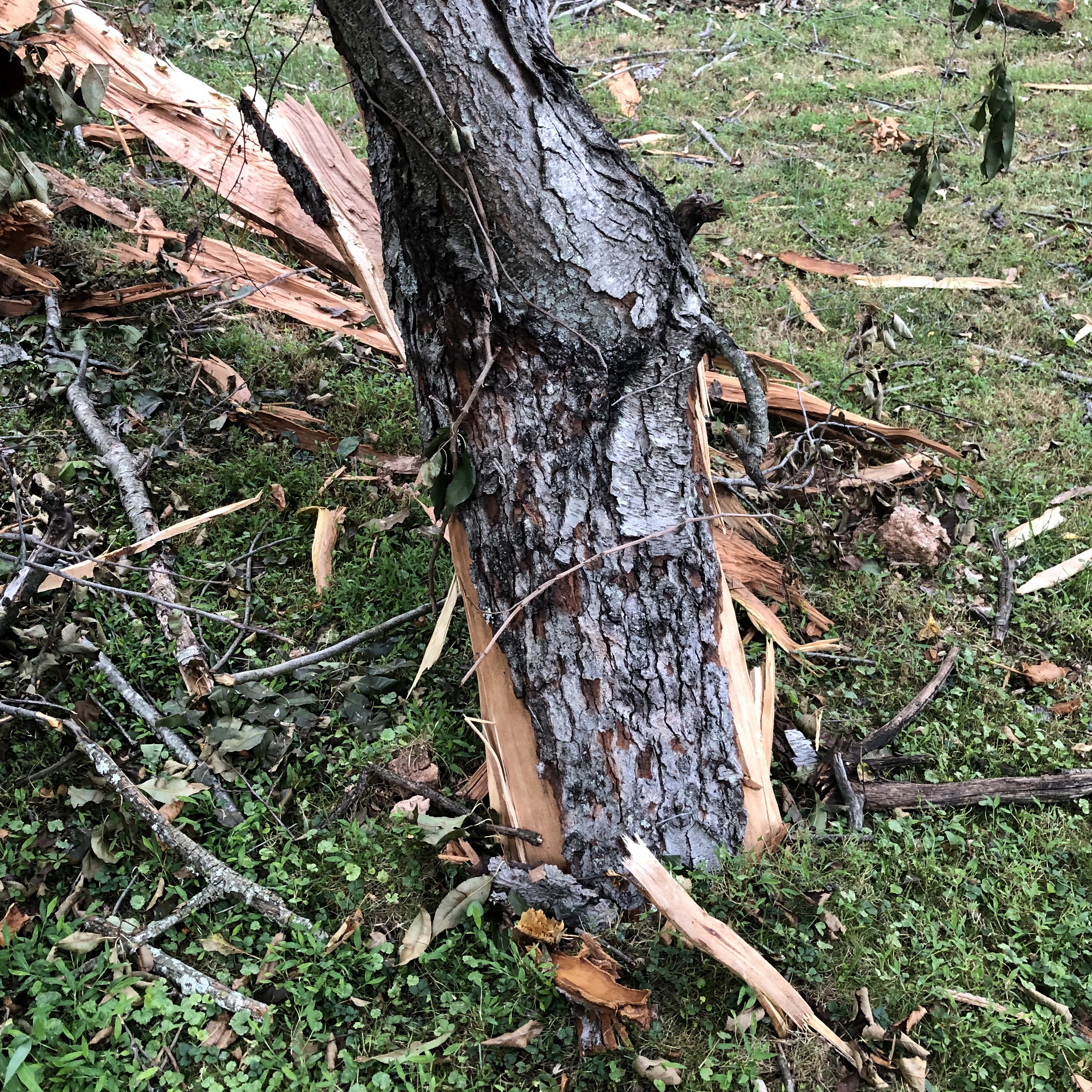
Splinter from Strike
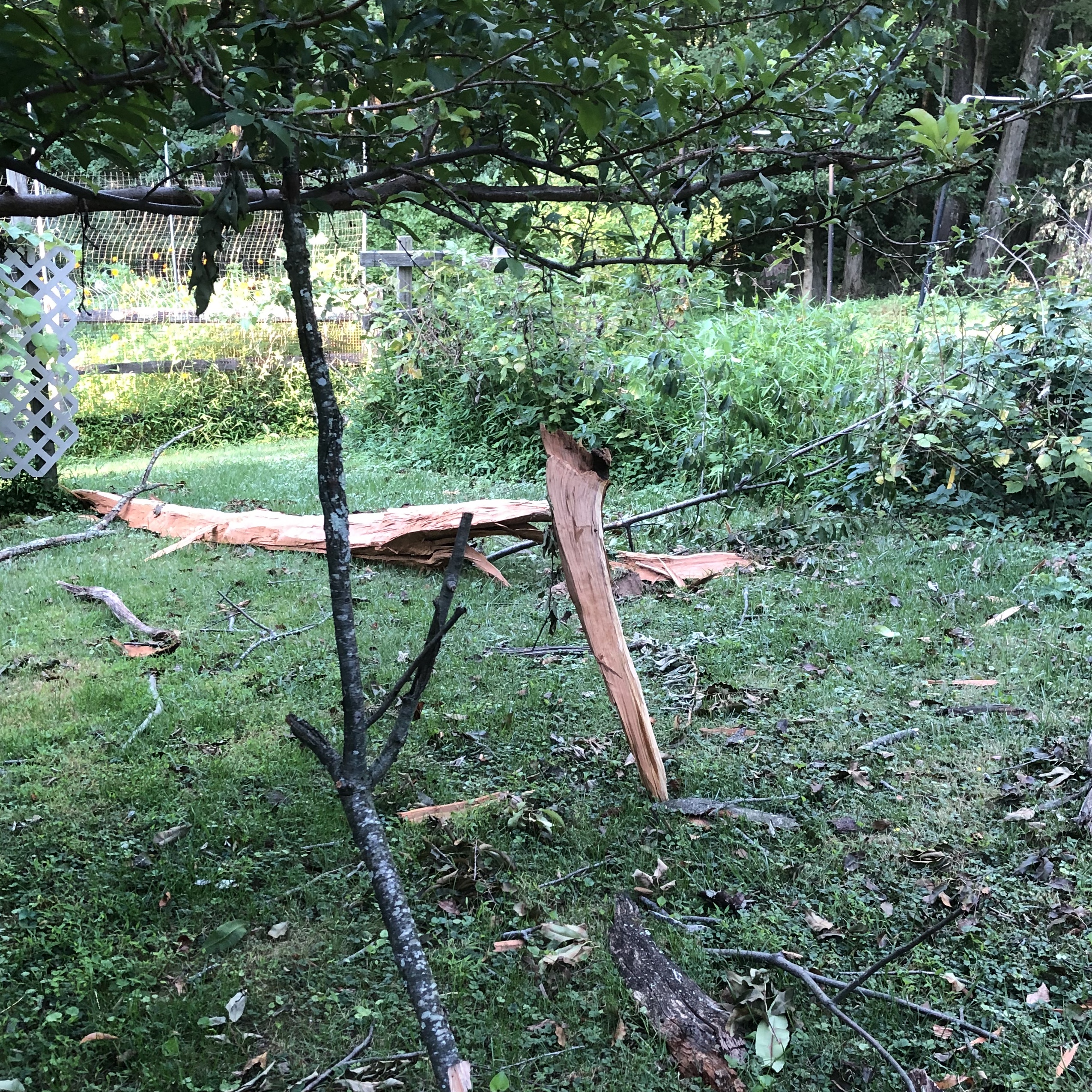
Do Lightning Strikes Kill Trees
Lightening strikes do not always kill trees. It depends on how strong the strike is, the amount of moisture in the tree, and the extent of structural damage. Some trees die within day, other may survive. Any tree that sustains significant structural damage should be inspected for safety. We removed this cherry tree due to safety concerns.ion
References:
